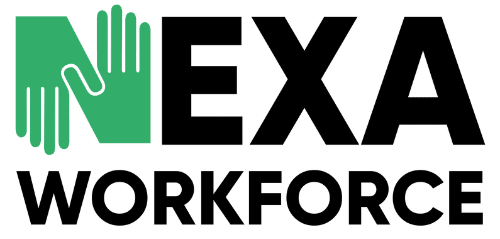The US economy has shifted from manufacturing to a service-based model, driven by technology, globalization, and changing consumer demands.
As of September 2023, severe labor shortages are evident in states like Nevada and Utah, according to the U.S. Chamber of Commerce’s Worker Shortage Index.
This article explores the impact of this shift, particularly the unskilled labor shortage, with a focus on small businesses and potential solutions like the EB3 visa program.
Key Takeaways
- The US economy has shifted from manufacturing to a service-based model, causing severe unskilled labor shortages in states like Nevada, Utah, Nebraska, Vermont, and Idaho.
- The service sector contributes significantly to the US GDP (77.6%).
- Unskilled jobs in the service sector are projected to grow, with the Bureau of Labor Statistics estimating 5.7 million new jobs by 2030.
- Small businesses, with 43% reporting unfilled job openings, face disproportionate struggles due to labor-related concerns and inflation worries.
- The EB3 visa program emerges as a potential solution, contributing to businesses’ long-term labor needs and economic growth.
State of Labor Shortages
The U.S. Chamber of Commerce’s Worker Shortage Index, measuring the severity of the labor shortage in each state, indicates that as of September 2023, states like Nevada, Utah, Nebraska, Vermont, and Idaho are experiencing the most severe labor shortages.
Consumer Demand Shift
Changes in consumer demand, particularly the growing demand for high-quality services, have also contributed to the shift towards a service-based economy.
This huge demand cannot be fulfilled merely by the native US workforce, thus it is imperative and strategic for businesses to recruit foreign unskilled workers for a booming service-based economy.
The Growth of the Unskilled Service Sector
The service sector, also known as the tertiary sector, is a significant part of the US economy. It produces intangible goods and is considered the largest of the three major economic categories.
As of 2021, the service sector contributed approximately 77.6% to the US GDP.

Projections in the Unskilled Services Market
Talking of unskilled service sector, the “unskilled” jobs have been the largest category of work in the twenty-first century.
A research report concludes that unskilled jobs contributed to more than 50% of the US labor force in 2018.
Farm, factory, and other forms of laborers have been hired mostly for the “unskilled” jobs, since the 2000s. These jobs were relatively easier to fill due to their entry requirements i.e.- a high school degree or less.
It is estimated that the number of unskilled jobs in the US labor market keep growing. The Bureau of Labor Statistics estimates home health/personal care aids, fast foods workers, and counter workers to be the three fastest growing occupations between 2019 and 2029.

Workforce Landscape in the Service Industry
Presently, 80% of employees in the private sector in the United States work within the service industry.
The following data should give an overview of the unskilled workforce landscape:
- In 2019, the service sector saw significant employment in retail and fast food, with 4.6 million retail sales workers and 3.9 million fast food workers.
- Since the 2000s, service occupations like retail, fast food, hospitality, and personal care aides became primary sources of employment for non-college-educated workers, constituting 66% of minimum wage earners in 2020.
- The retirement of the “baby boom” generation created a demand for direct-care workers such as certified nursing assistants (CNAs), personal care aides, and home health aides.
The prominence of unskilled jobs within the service sector has been a defining characteristic of the twenty-first-century labor force.
During the pandemic of 2020, these workers were labeled as “essential workers” which reiterates their role in the US workforce.
| Year | Value Added to GDP (by %) |
|---|---|
| 2010 | 10.11 |
| 2011 | 10.48 |
| 2012 | 11.02 |
| 2013 | 11.39 |
| 2014 | 11.95 |
| 2015 | 12.63 |
| 2016 | 13.13 |
| 2017 | 13.66 |
| 2018 | 14.39 |
| 2019 | 15.07 |
| 2020 | 14.86 |
| 2021 | 16.52 |
| 2022 | 17.93 |
Source: GDP value added services industry U.S. 2022 | Statista
The Unskilled Labor Shortage
Labor Market Dynamics
The labor market in the United States has been experiencing a significant shortage of unskilled labor.
As of 2023, the US Chamber of Commerce reported over 10 million job openings in the US for which employers were struggling to find workers.
However, it’s important to note that this does not necessarily indicate a labor shortage. Instead, it suggests a shortage of jobs paying sufficient wages to attract US-born workers to fill these job openings.
Projected Employment Growth for Unskilled Workers
The unskilled service sector is performing as the best sector in terms of increasing growth. In recent years, it is growing faster than the overall economy.
The unskilled service sector is projected to add 5.7 million jobs within the present decade (2020-2030), which is around 37 percent of the overall growth in the US economy.
The average annual salary of workers in the US ranges from $35,000 to $40,000. With such low compensation, natives usually do not prefer any unskilled jobs as a long-term career. Thus, it is beneficial for businesses to hire unskilled overseas workers to fill the gap in labor shortages.
Multifaceted Reasons for Shortage
The reasons behind this shortage are multifaceted. Factors such as retirements and the effects of the COVID-19 pandemic have contributed to the labor shortage.
The pandemic, in particular, has led to disruptions in the labor market, with many workers opting to leave their jobs due to health concerns or caregiving responsibilities.
The labor shortage has had a significant impact on various sectors, particularly in industries such as food service and hospitality, which have struggled to retain workers.
These industries heavily rely on unskilled labor, and the shortage has led to operational challenges and increased costs for businesses.

The Role of Businesses
As of February 2023, there were 9.9 million job openings in the US, which is 2.4 million above the pre-pandemic record. This indicates a significant number of positions that businesses are struggling to fill.
Small Businesses: Disproportionate Struggles
The labor shortage has disproportionately affected small businesses, with 43 percent of them reporting unfilled job openings, as per the National Federation of Independent Business’s March 2023 jobs report.
Among small business concerns, labor-related issues remain predominant, with 23 percent expressing worries about labor quality as the foremost concern, 11 percent highlighting labor costs, and 24 percent citing concerns about inflation.
Sectoral Struggles: A Glimpse into Challenges
Businesses in various sectors have reported difficulties in filling job openings.
In the United States, businesses in Retail and Wholesale of Consumer Goods reported close to 70% of job openings remaining unfilled, with close to 55% of roles unfilled in manufacturing and 45% in leisure and hospitality.
Operational Challenges: Implications of Prolonged Vacancies
The labor shortage has led to operational challenges for businesses. Prolonged vacancies can lead to operational inefficiencies, increased costs, and reduced productivity.
In response to these challenges, a net 42 percent of small businesses reported raising compensation over the previous three months, and a net 22 percent reported planning to increase compensation over the following three months.
Businesses play a pivotal role in addressing the labor shortage. By understanding the challenges and implementing effective strategies, businesses can help mitigate the effects of the labor shortage and contribute to economic growth.
EB3 Visa Solution
The EB3 visa emerges as a viable solution for businesses grappling with the U.S. labor force crisis.
- Addressing Labor Shortages
EB3 visa offers a swift medium to legal employment for individuals across skill levels.
Take the restaurant industry, poised for a significant 14% workforce expansion, it will translate to 1.8 million new positions over the next decade.
- Mitigating Turnover
By putting foreign workers on the path to obtaining their Green Card, the EB3 visa introduces an extra incentive for employee loyalty.
This can be a positive impact for the food and beverage industries, which are notorious for 35% average turnover rate.
- Cost-Effective Hiring
Recruiting talent via EB3 visa from regions with a lower cost of living can result in significant labor cost savings.
So the EB3 visa program offers a potential solution to the unskilled labor shortage in the US. It emerges as a strategic tool for businesses, offering a reliable and dedicated workforce to boost revenue, cut costs, and develop better expansion strategies.
Learn more: The Role of Immigrants in Shaping the US Workforce
Wrapping Up
The current US economic landscape reflects a significant move toward a service-based economy, emphasizing the crucial role of unskilled labor.
Small businesses, facing challenges in filling job openings, underscore the need for strategic solutions.
The exploration of options like the EB3 visa program offers insights into adapting to these economic shifts, ensuring a sustainable and diverse workforce for the future.





